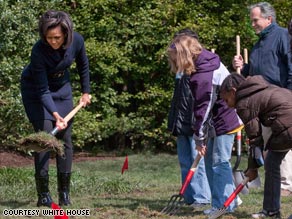
I look forward to a favorite hobby every year at this time: starting seeds indoors. I like that you can start your own plants for just a wee fraction of the cost of buying them full-grown at a nursery. Plus, there are so many more seed varieties available than nursery plants, and you can tailor them to the length of your growing season by timing when you start them.
(Click here for a Backyard Farming look at the basics of starting seeds indoors.)I’m especially excited this year because my husband Jeff built me a rack with growing lights. Previously I relied on the sun alone, but had to chase it. I engaged in a game of musical flats, moving my many seed trays to different windows throughout the day – starting on the east side of the house, on the floor next to wall-length windows, then across to the dining table in the afternoon, then on the floor so we could eat dinner, and back again. To say this process consumed our household is an understatement.
This year I knew my super curious, busy, messy 1-year-old would make short work of pots of soil on the floor. So my husband and I investigated different options for a seed rack.
We found cool commercial systems, but didn’t like the high cost: upwards of $100 for something that would fit one flat, maybe two.
Savvy marketing for such grow light systems pins on the idea that you MUST have a special bulb for your seeds, and that it must fit into their special fixture. But after doing some research with the state extension service, Jeff and I learned that standard fluorescent bulbs – a.k.a. shop lights -- work perfectly well. Ah-hah! Talk about a light-bulb moment to encourage doing it yourself!

So here’s how to make a rack:
Using boards we already had in our garage, Jeff made a simple open-backed shelf. The diagonal crosspiece on the back adds stability. He used screws, so at season’s end we can disassemble it and stuff it right back in the garage.
Our rack is slightly wider than four feet, to accommodate basic shop light fixtures. (Fluorescent bulbs are also available in two-foot lengths.) The fixtures are suspended on simple hooks from the shelf above. The chains give us the flexibility to move the lights higher as seedlings get taller. Two flats fit on each shelf. Although the top shelf isn’t equipped with a light fixture, the rack’s placement in front of a window gives me more space.
Jeff spaced the shelves so I don’t have to crouch to tend the seedlings – I can sit on the floor for the bottom one, or stand for the other. They are about 27 inches apart. Depending on how things go this season, we may alter the shelf spacing, but we decided to err on having more room for plants to grow beneath lights than not enough.
Jeff selected this type of bulb:


He thought it – ahem – interesting that the bulbs packaged as “grow” lights don’t even list their specifications on the label. Maybe it’s because then the outright comparison to standard fluorescent bulbs would be more obvious.
At the store where he shopped, one two-foot “grow” light bulb was $20 whereas each four-foot regular fluorescent tube was $5.
Our entire cost was just over $40: four bulbs at $5, two fixtures at $10, and a little bit more for the hardware and chains. I know this rack will serve us for many years.
Another option to making a rack is to buy a ready-made shelves or a bookcase, and then outfit it with the fixtures. I had fun scouring second-hand stores for this purpose – but then we remembered about our spare boards.
I’m excited to take my seed efforts to a whole new spectrum this year, and will let you know how it goes. This rack is in a room I can close off from my 1-year-old, at least until he figures out how to turn the doorknob. Wish me luck!
~Jennifer


















